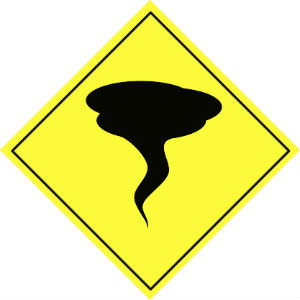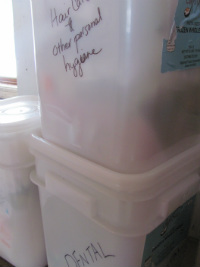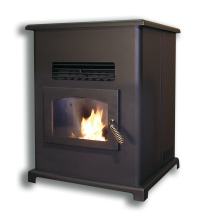The kids and I were “roughing it” with mattresses on the floor on the first night we stayed at the new house. After the kids went to bed, I read the manual for the pellet stove. Where I’m from, you turn a knob on the wall to heat the house. I was excited about the efficiency of the pellet stove but had apprehensions (I think it goes back to not earning my “camping badge” because I was scared of starting a fire). I spent an hour trying to figure out the pellet stove (and it really couldn’t be easier), and then I spent the next hour convinced that I was going to burn the house down.
It was in this state of “I really don’t know what I’m doing” anxiety, that I discovered Lisa Bedford’s book “Survival Mom” had arrived in the mail that very day. I decided that it would be the perfect diversion while I stayed up awhile to ensure the fire was safe.
The humor, the common sense, and Lisa’s charming storytelling served as a beautiful distraction to me. No longer was I staying up to call 9-1-1 when the house blew up—I was staying up because I simply could not put the book down.
In Survival Mom: How to prepare your family for everyday disasters and worst-case scenarios, Lisa makes it quite clear that you do not prepare because you live in constant fear—you do it so that you will not have to live in fear. I appreciated her emphasis on this point. She faced the common stereotypes head-on of words like “survivalist” and she gave an extremely calm, reasonable line of logic to explain why drinking water or a flashlight in the car is a “good idea”. Perhaps my favorite aspect of the book are the quotes in the margins because they underscore the prudence of preparedness by showing that some of the greatest minds in history spoke directly to the subject. Take this one for instance:
“Let our advance worrying become advance thinking and planning.” –Winston Churchill
Although the philosophy of prudent planning is an underlying theme, it really is a how-to manual. You could very easily read this in bite-sized pieces or even just the parts that appeal to you. There are worksheets in every section to help you plan for your specific situation, and she clearly explains that a prepared home is not one-size-fits-all.

And speaking of one-size-fits-all, the singular wish I had for this book would be that she give greater emphasis to whole (real) foods. Let’s face it, if the economy melts down, we’ll all be rendering our own lard (or bartering for it from someone who does). She did not leave us “foodies” out either, but if you are in that camp, you will likely find yourself skimming over a few sentences about canned or prepackaged foods. So Lisa, if you are reading this, that would be my only suggestion for the next edition!
Okay, I lied about my favorite part. This is my favorite part: every chapter has a section called “The Prepared Family”. This move towards self-sufficiency is not a solo act and her tips to prepare the entire family are excellent bonding/teaching activities for everyone. What a wonderful gift to give our children, the confidence and self-reliance to face difficult situations.

Occasionally, she featured a real mom who has implemented these preparations in a life-saving way. You hear from hurricane and tornado survivors, and from a mom who protected her baby from an intruder. There is the low-income, single mom who can provide good nutrition for her family because she and the children grown their own food.
You can either pretend that these situations will never touch you or you can empower yourself (and your family) to face them so that you can release the unspoken fear.
Woman to woman, she spoke my language. I can highly recommend other preparedness books out there (and I do) but this book from a woman’s perspective was long overdue!
I will not lie to you—I’m not a newbie at this preparedness thing but I still have “growth areas” (as a boss in my former life would say). I really thought for all of the books I have read and seminars that I have attended that I would be bored with the basics. Not at all! I was so motivated that I have already implemented a few changes around here with more to come.
I want to share with you some of the changes I have personally implemented in my home since reading this book:
1) I shored up (no pun intended) my water storage.
2) I realized that I am too cluttered. She suggested the used bakery buckets to store non-food items that are not weather-sensitive in outside storage spaces. Wilson collects these buckets like trading cards but my use of them had been limited. After reading Lisa’s section on organization, I tore through all of our extras in the house. Do I really need 10 spare toothbrushes in the medicine cabinet? I clearly packed and labeled them, and then got them out of the house. My problem is not lack of storage space—it is too much stuff!

3) I installed a good old fashioned corded phone that plugs straight into the wall without electricity or batteries. Everyone knows this already—but I had to be reminded I guess.

4) I took inventory of the emergency supplies in my car.
Even those of us who have been doing this awhile need to go back to the basics, and review our level of preparedness with a fresh set of eyes.
If you are new to the idea of being prepared, start with this book. She covers everything you need to know and she covers it well.
–Chaya
Note: I did not get paid to review this book and I do not currently sell it–although I think we will start soon!
Photo Credits:
Pellet Stove: Breckwell

